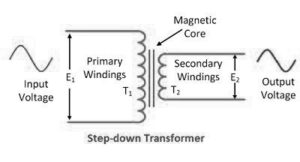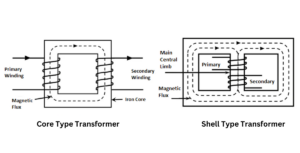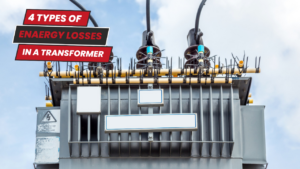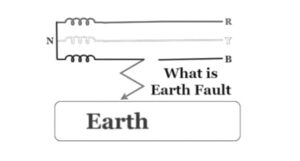Transformer: General Overview
A transformer can be defined as an electric/ static device that transfers electrical energy between two or more circuits through electromagnetic induction that is used to increase/ decrease and adapt the voltage levels for different purposes. The primary purpose of the transformer is to make electrical power usage accessible and convenient everywhere.
Transformers transfers alternating current from one circuit to another on the same frequency. They are considered highly efficient and reliable as it often exceeds efficiencies by 95% to 99% for large power transformers, playing an essential role in electrical infrastructure.
What are step-up and step-down transformers?
Both step-up and step-down transformers are electrical transformers used to transfer electrical energy between different measures of voltages, but they serve different purposes. Read more to understand how the transformers are designed to solve the voltage and current levels.
Step-up transformer
A step-up transformer is a type of transformer that increases the voltage of an alternating current (AC) while the current decreases. They are often used in power transmission systems to increase the voltage for long-distance transferal. They are primarily used in electronic devices and industrial processes that require higher voltages.
In a step-up transformer, the primary winding is made up of thick insulated copper wire, and the secondary winding is made up of thin insulated copper wire.
For example-
- Your refrigerator’s compressor may require 220V of power to operate as the compressor typically requires higher voltage to function efficiently. Now if you plug it into a 110V outlet, there are higher chances of the refrigerator not working correctly. A step-up transformer fixes this, as there is an increase in voltage.
- Power transmission from substations to cities might require 11kV or more voltages for versatile connection, and a step-up transformer raises the output voltage and solves it if needed.
They are also used in electric appliances like batteries, inverters, and stabilisers.
Step-down transformer
A step-down transformer is a type of transformer that decreases the voltage of an alternating current (AC) while the current increases. They are frequently used in power distribution networks to drop high-voltage to lower voltage (primarily for residential, commercial, and industrial use).

A step-down transformer decreases power circulation and lowers voltage levels. The output current is high in a step-down transformer, so the thick insulated copper wire is used for making secondary winding.
For example –
- Some small devices like doorbells might only be used at low voltages like 16V, but if the power circuit carries 110V to 220V, a step-down transformer is generally used to decrease and reduce the voltage from 110V or 220V to 16V.
They are also used in primary adapters and chargers (for mobile phones and CD players).
If you are looking to repair/ upgrade or recondition your transformer, you can definitely visit Grant Transformers.
Step Up transformer vs. Step Down transformer: Major Difference
Both transformers comprise primary and secondary windings wrapped around a shared iron core. But the crucial differences between the two transformers are that the output voltage is increased in a step-up transformer, whereas a step-down transformer has decreased output voltage.
Due to the differences in the number of turns, the voltage in the secondary windings is higher than that in the primary windings.
Here is a tabular comparison presented for you to understand more about electric power distribution in the most understandable way.
Differences between Step Up and Step Down Transformers
| Step-up transformer | Step-down transformer |
|
|
|
|
|
|
|
|
|
|
|
|
|
|
|
|
|
|
Coil in Transformer
The transformer includes two coils of wires usually wound around a common core (often made of laminated iron or steel), namely, the primary and the secondary coil. The ratio of turns between the primary and secondary determines the voltage transformation in the transformer.
Primary coil: It is connected to the input voltage source that receives the alternative current (AC) and makes the AC flow through a magnetic field.
Secondary coil: It is connected to the output circuit and delivers the transformed voltage to the load. According to Faraday’s law of electromagnetic induction, the magnetic field generated by the primary coil induces a voltage into the secondary coil.
From a safety point of view:
- Transformers play a crucial role in electrical systems as they provide insulation and isolation between different voltages, minimising the risk of electric shock.
- They also protect equipments by preventing damage from electrical surges or overloads and regulating voltages.
- Transformers are essentially used for efficient electricity distribution for economic reasons, and voltage conversion is allowed, which enables power to be distributed over long distances with minimal losses.
How does a transformer work?
A transformer works on the principle of electromagnetic induction between two or more coils, and the electric energy is transmitted.
1. The transformer generally connects the alternating current power source through the primary wire.
2. Magnetic field is generated, i.e., expanded and collapsed in sync with the AC as per Ampere’s law.
3. Magnetic field induction changes the voltage in the secondary connected to the load/ output circuit.
4. Voltage transformation in the secondary wire depends on the ratio between the primary coil and the secondary coil.
5. In the secondary coil, lesser turns increase the current, and more turn decreases the current. This way, current transformation takes place.
6. Energy transfer from the primary wire to the secondary wire through magnetic coupling as it provides a low-resistance path for magnetic flux.
By effectively stepping up/ down voltage for transmission while maintaining electrical isolation between input and output, transformers enable the efficient distribution and utilisation of electrical power in various applications.
The primary significance of the Transformer
Voltage Transformation, Current Isolation, Power Distribution, Electrical Noise Isolation, Energy Efficiency and Safety, and Power Quality and Stability are some of the primary significance of the Transformer. These significances result in cost savings and environmental benefits, ensuring proper matching and isolation between different circuits.
To light our houses or keep the refrigerator running, the contemporary world and the day we live in demand a secure power supply for residential or commercial enterprises. The transformer does the job with excellence.
Choosing one of the best Transformer
Transformers have been proving their great importance in our everyday lives. It provides stability to various applications and maintains the required current level for special appliances, motors, machinery, and equipment.
We identify your electrical problems and develop value-added solutions with a long and rich history of providing excellent customer care.
If you have any queries or confusion or want to set up/ upgrade your Transformer, Contact Us without hesitation.



